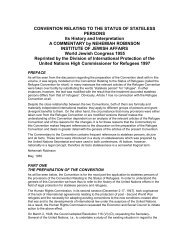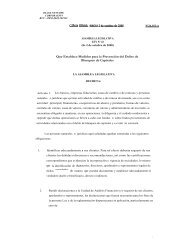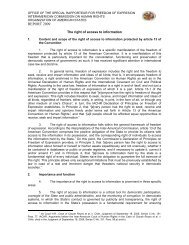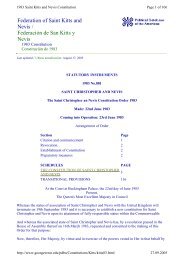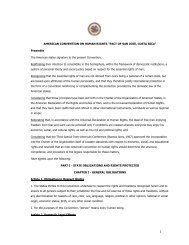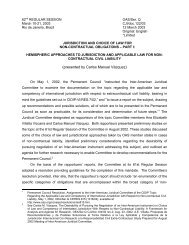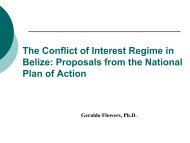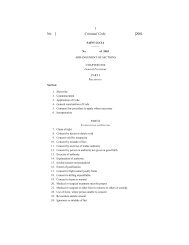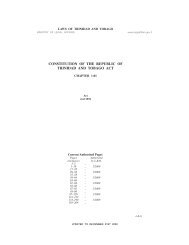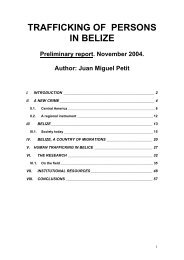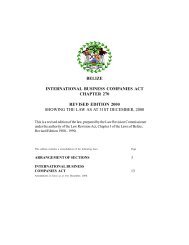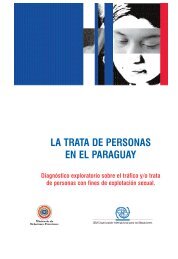(HEMA) Initiative. - OAS
(HEMA) Initiative. - OAS
(HEMA) Initiative. - OAS
You also want an ePaper? Increase the reach of your titles
YUMPU automatically turns print PDFs into web optimized ePapers that Google loves.
PRELIMINARY VERSION BASE DOCUMENT FOR<br />
THE MEETING OF HEALTH AND ENVIRONMENT<br />
MINISTERS OF THE AMERICAS<br />
Mar del Plata - June 17, 2005<br />
Human beings, like all organisms, depend on their environment for their survival, health and<br />
wellbeing. Their capacity to adapt to their surrounding environment and moreover, to modify their<br />
natural and social environment to better suit their needs, allowed the species to survive and prosper.<br />
However, while these modifications improved living standards to the extent of increasing life<br />
possibilities, they created, at the same time, health and survival hazards.<br />
The countries of the Americas include a huge range of natural ecosystems and a similar diversity<br />
of cultures, economies and social conditions. Differences between countries are identifiable<br />
and acknowledged, but great disparities are frequently found even between communities within<br />
the same country or city.<br />
A minority of developed countries and a majority of countries at various stages of transition<br />
towards development cohabit in the continent, which is faced with the double task of solving problems<br />
of different degrees involving diseases associated to biological pollution and health hazards<br />
caused by air and water pollution; from solid waste disposal and from the handling of toxic and<br />
hazardous substances.<br />
Although countries differ in their problem-solving capacity, an issue that calls for adequate policies<br />
and plans for situations at national and local level, there exist important common denominators<br />
that offer a basis for cooperation between countries.<br />
None of the nations is free of populations immersed in poverty; exposed to weather, physical,<br />
biological and chemical hazards; deficiently organized for self-assistance and community cooperation;<br />
and with difficulties to ensure universal social, educational and health services.<br />
Furthermore, no country is isolated from the impact of its neighbors’ environmental and life conditions<br />
and all of them are exposed to the side effects that unsustainable development has on the<br />
atmosphere, water, soil and natural biological diversity.<br />
ENVIRONMENTAL, HEALTH AND ECONOMIC BASES FOR THE INITIATIVE<br />
OF THE HEALTH AND ENVIRONMENT MINISTERS<br />
The efforts to establish guidelines that take into account environmental safety and its potential<br />
impact on health, acquired a new dimension in the United Nations Conference on Human<br />
Environment (Stockholm, Sweden, 1972). As of then, a series of Conferences were held at an international<br />
level, which, although seeking to build a broader than sectorial view, somthow privileged<br />
technological aspects that at that time represented restrictions to act. During the 1960 decade,<br />
through the so-called Punta del Este letter, the Americas learned of a proposal to supply water and<br />
sanitation services to certain areas of rural population of the Region, as a way to reduce the high<br />
Meeting of Ministers of Health and Environment of the Americas |19




